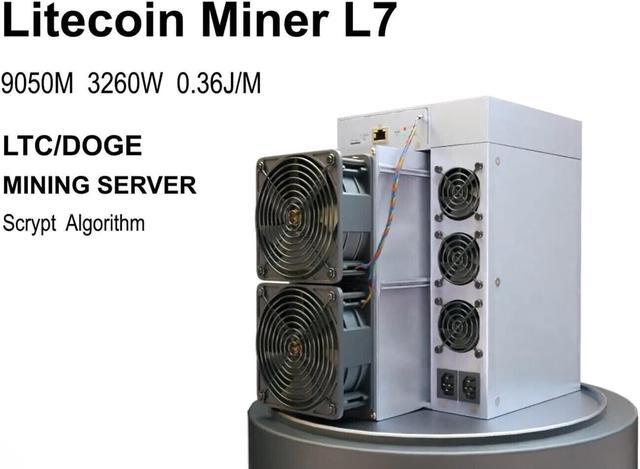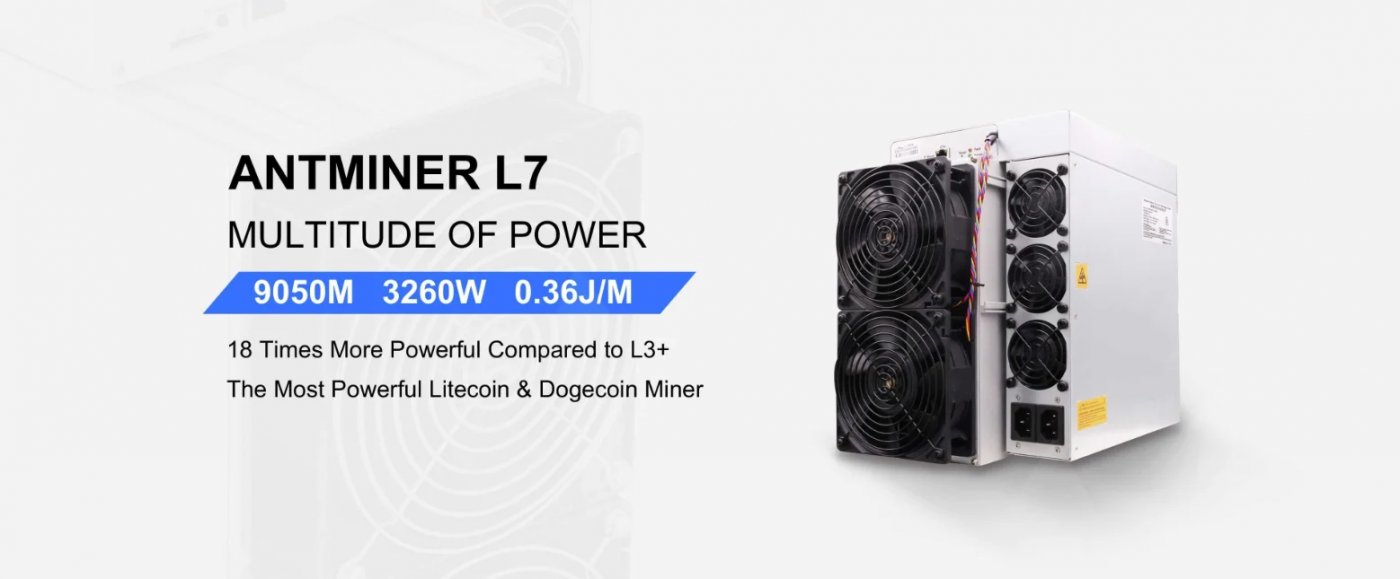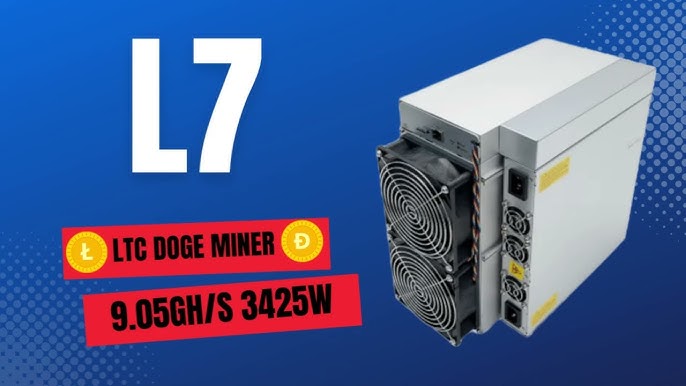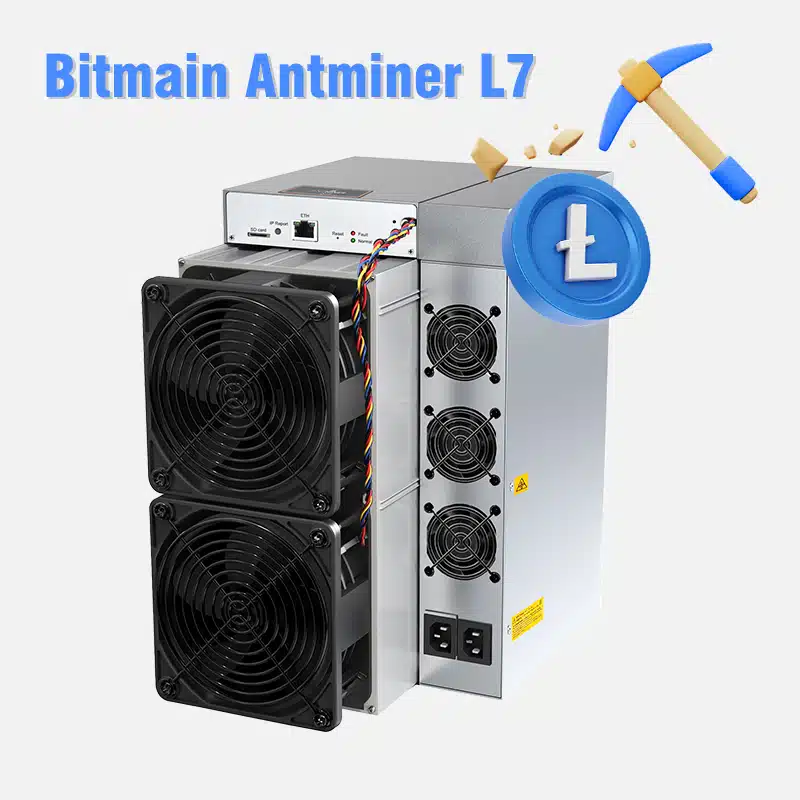How to Predict Mining Difficulty for Litecoin with L7?
Cryptocurrency mining is a dynamic and ever-evolving field, where profitability hinges on various factors, including mining difficulty, hardware efficiency, and electricity costs. For Litecoin miners, predicting mining difficulty is crucial for optimizing operations and maximizing returns. The Litecoin L7 Miner, developed by industry leader Bitmain, is a powerhouse in the Scrypt mining ecosystem, offering unparalleled efficiency and reliability. In this article, we’ll explore how to predict mining difficulty for Litecoin using the L7, while also diving into the features and advantages that make this miner a game-changer for cryptocurrency enthusiasts.
Understanding Mining Difficulty
Before we delve into the specifics of the L7, it’s essential to understand what mining difficulty means. Mining difficulty is a measure of how hard it is to find a hash below a given target. It adjusts automatically to maintain a consistent block time, ensuring that blocks are mined at a steady rate regardless of the total computational power on the network.
For Litecoin, mining difficulty adjusts approximately every 3.5 days (based on the Scrypt algorithm). This adjustment ensures that the time between blocks remains close to 2.5 minutes. Predicting mining difficulty allows miners to anticipate changes in profitability, plan for hardware upgrades, and optimize energy consumption.
The Role of the Litecoin L7 Miner in Difficulty Prediction
The Litecoin L7 Miner is a top-tier mining solution designed specifically for the Scrypt algorithm, which powers Litecoin (LTC), Dogecoin (DOGE), and other cryptocurrencies. With a staggering hashrate of 9050 MH/s (±3%) and a power efficiency of 0.36 J/MH (±5%), the L7 is one of the most efficient miners in its class. But how does it help in predicting mining difficulty?
1. Real-Time Performance Monitoring
The L7’s advanced firmware includes built-in tools for monitoring real-time performance metrics, such as hashrate, power consumption, and temperature. By tracking these metrics, miners can estimate their contribution to the network’s total hashrate, which is a key factor in difficulty adjustments.
2. Historical Data Analysis
Bitmain’s Antminer series, including the L7, is supported by robust software that allows users to analyze historical mining data. By studying past difficulty adjustments and correlating them with network hashrate trends, miners can identify patterns and make informed predictions about future changes.
3. Scalability for Large-Scale Operations
The L7’s compact design and high efficiency make it ideal for scaling up mining operations. By adding more units to your setup, you can increase your total hashrate, giving you greater control over your share of the network and your ability to predict difficulty changes.
Practical Steps to Predict Mining Difficulty with the L7
Predicting mining difficulty involves a combination of data analysis, network monitoring, and strategic planning. Here’s how you can leverage the L7 to stay ahead of the curve:
1. Monitor Network Hashrate
The Litecoin network’s total hashrate is a critical factor in difficulty adjustments. Use tools like Litecoin Block Explorer or mining pool dashboards to track the network’s hashrate over time. Compare this data with your L7’s performance to understand your contribution to the network.
2. Analyze Historical Difficulty Changes
Examine past difficulty adjustments to identify trends. For example, if the network hashrate has been steadily increasing, you can expect difficulty to rise in subsequent adjustments. The L7’s efficiency ensures that you remain competitive even as difficulty increases.

3. Use Predictive Models
Several online tools and calculators, such as WhatToMine and CryptoCompare, allow you to input your hardware specifications (like the L7’s hashrate and power efficiency) to estimate future profitability based on projected difficulty changes.

4. Optimize Your Mining Setup
The L7’s low power consumption and high efficiency make it easier to optimize your mining setup for maximum profitability. By reducing electricity costs and improving hash-to-power ratios, you can maintain profitability even as difficulty increases.
Why the Litecoin L7 Miner Stands Out
While predicting mining difficulty is essential, having the right hardware is equally important. The Litecoin L7 Miner offers several advantages that make it a standout choice for Scrypt miners:
1. Industry-Leading Performance
With a hashrate of 9050 MH/s and power efficiency of 0.36 J/MH, the L7 outperforms most competitors in the Scrypt mining space. This efficiency translates to higher profitability and lower operational costs.
2. Reliability and Durability
Backed by Bitmain’s reputation for quality, the L7 is built to last. Its robust construction and wide operating temperature range (0°C to 40°C) ensure reliable performance even in challenging environments.

3. User-Friendly Design
The L7 features easily replaceable accessories and readily available spare parts, minimizing downtime and simplifying maintenance. This user-friendly design is especially valuable for miners who operate multiple units.
4. Comprehensive Support
Minerfixes, a trusted partner, offers one-stop service for all your L7 needs, from setup to maintenance and beyond. This support ensures that your mining operation runs smoothly and efficiently.
5. Future-Proof Investment
As the cryptocurrency market continues to evolve, the L7’s efficiency and versatility make it a smart, long-term investment. Whether you’re mining Litecoin, Dogecoin, or BEL, the L7 is designed to adapt to changing market conditions.
Real-World Applications of the L7 in Difficulty Prediction
Let’s consider a real-world scenario: You’re running a small-scale Litecoin mining operation with five L7 units. By monitoring the network hashrate and analyzing historical difficulty adjustments, you notice a trend of increasing difficulty over the past few months. Using predictive models, you estimate that difficulty will rise by 10% in the next adjustment.

To maintain profitability, you decide to add two more L7 units to your setup, increasing your total hashrate and offsetting the expected difficulty increase. Thanks to the L7’s efficiency and low power consumption, this expansion remains cost-effective, ensuring that your operation stays profitable even as the network becomes more competitive.
Conclusion
Predicting mining difficulty is a critical skill for Litecoin miners, and the Litecoin L7 Miner is the perfect tool to help you stay ahead of the curve. With its industry-leading performance, user-friendly design, and comprehensive support, the L7 empowers miners to optimize their operations and maximize profitability. Whether you’re a seasoned miner or just starting out, the L7’s efficiency and reliability make it a smart investment for anyone looking to succeed in the competitive world of cryptocurrency mining.
By leveraging the L7’s advanced features and following the practical steps outlined in this article, you can confidently predict mining difficulty and make informed decisions that drive your mining success. Invest in the future of cryptocurrency mining with the Litecoin L7 Miner—your gateway to efficiency, profitability, and long-term growth.